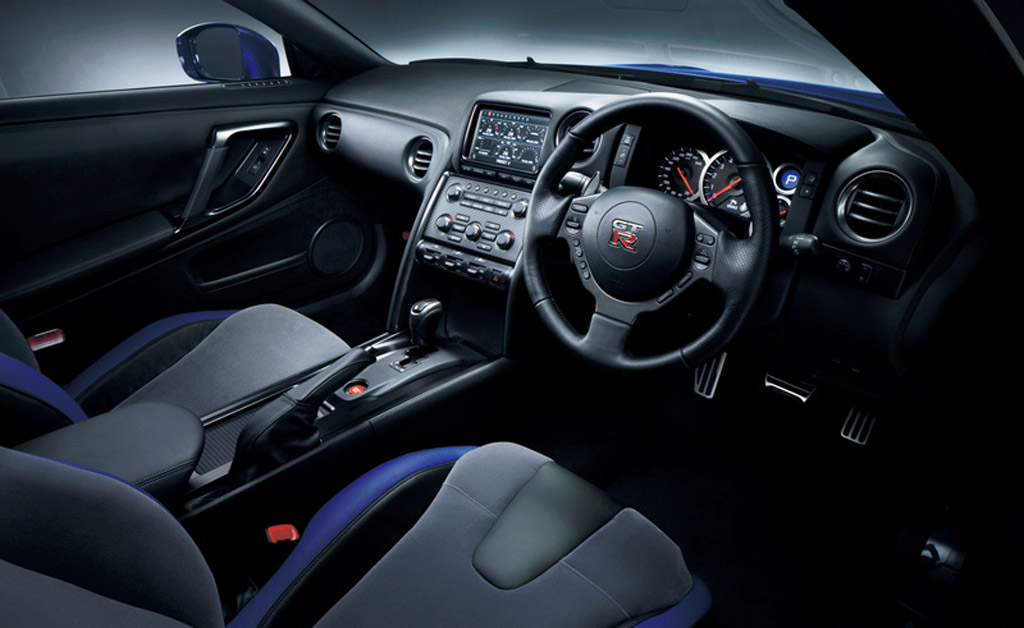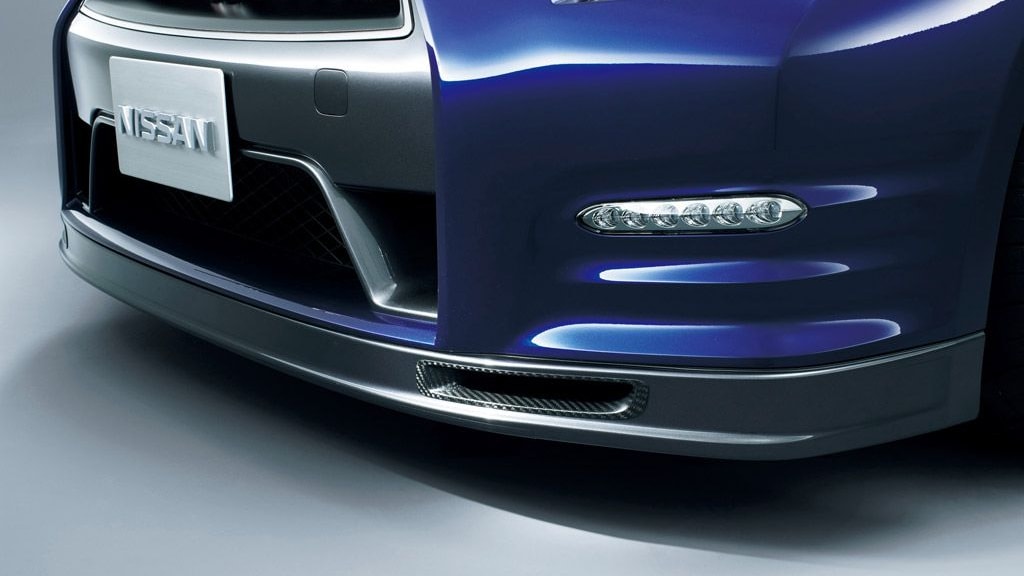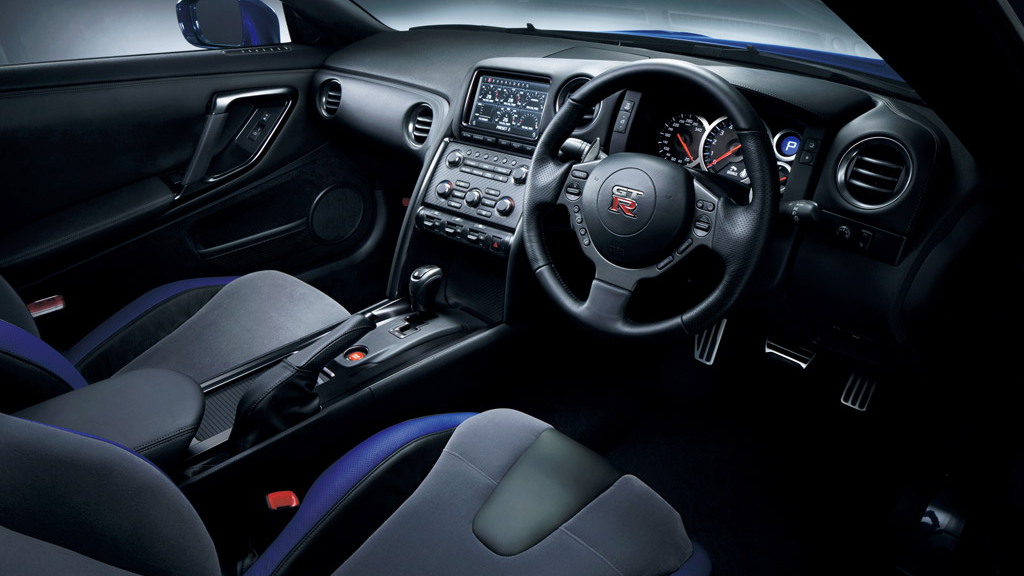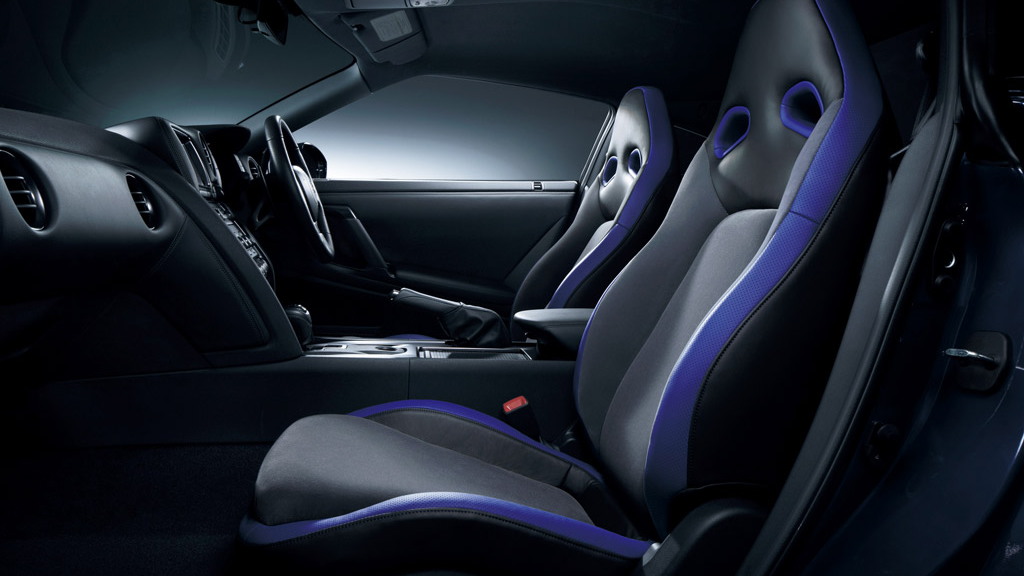The new car has only been revealed in its Japanese spec, but this is the model that will be sold elsewhere around the globe early next year as the 2013 Nissan GT-R.
First and foremost, the car is getting a power boost that sees output from its twin-turbocharged 3.8-liter engine rise to 542 horsepower at 6,400 rpm and 466 pound-feet of torque at 3,200 rpm. Best of all, that torque will plateau from 3,200 revs all the way up to 5,800.
At the same time, engine response and torque at mid- and low-speeds, and power at high revolutions, has been significantly improved, but Nissan also claims that the car has been made even more fuel efficient. Final EPA numbers aren’t expected until closer to the new GT-R’s local launch next year.
The improvements are mostly due thanks to improved intake efficiency. Air flow resistance, for example, has been reduced by adding an intake manifold fitted to the head of each unit and the use of special resin in the enlarged air intake duct for the intercooler.
Air flow resistance has also been reduced through a more compact underfloor catalyzer, which improves emissions efficiency and reduces weight. Finally, for improved exhaust valve cooling performance, a newly-designed metallic sodium-filled valve has been adopted. Valve control timing, the air mixture ratio and ignition timing have all been improved as well.

2013 Nissan GT-R (Japanese spec)
But it’s not just about brute force as the 2013 Nissan GT-R has also been fitted with asymmetric suspension, meaning the design has been readjusted to compensate for the weight of the driver and steering column--just like in a race car. Additionally, more reinforcing, mainly around the rear part of the engine compartment and dash panel, improves cornering stability and provides the driver with a greater sense of road-holding ability.
For the front suspension, a harder spring rate on the left side has been set. For the rear, the suspension arm has been installed upward on the left side and downward on the right for an imbalanced wheel load when the car is stationary, but is equalized during driving, providing improved responsiveness and smoothness which the driver feels when steering, as well as enhanced cornering stability and riding comfort. Note, it’s not clear yet whether this design will only be used on right-hand drive models or featured globally.

2013 Nissan GT-R (Japanese spec)
For reducing the car's weight, this edition is made in a two-seat configuration, with the rear buckets removed and the front two replaced with lighter racing seats trimmed in a high-grip fabric. Another worthy option is a new carbon ceramic brake package that is likely to be offered in markets outside Japan.
With more power under the hood, a lighter and stiffer body, plus a host of new aero upgrades, reports of the GT-R shaving 8 to 10 seconds off its previous Nurburgring lap time now sound completely plausible. Nissan is also claiming that the car’s 0-60 mph time has dropped to just 2.72 seconds.
As mentioned, many of these specs are for the Japanese model. More details on the U.S. delivered 2013 Nissan GT-R should be revealed closer to the car's launch early next year. In the meantime, stay tuned for a world debut at the 2011 Tokyo Motor Show, press days for which kick off on November 30.









